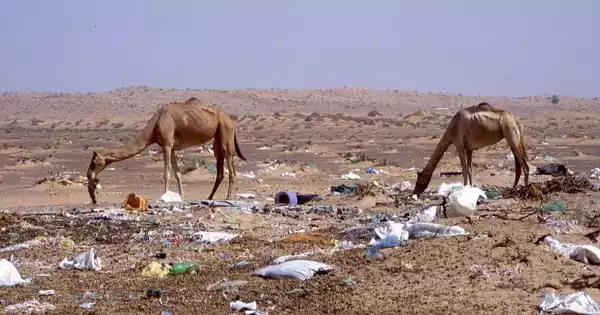In addition to being beautiful, snow-capped mountains act as natural water reservoirs by forming frozen water reservoirs that slowly melt into watersheds over the spring and summer. New research emphasizes the effects of harsh weather conditions on this annual cycle, which is crucial for the renewal and sustainability of freshwater supplies in a large portion of the Western United States.
In a study published January 5, 2023, in Environmental Research Letters, DRI researchers examine the role of spring heat waves on the melting rates of mountain snowpacks across the West. They discovered that 24% of all mountain snowpack monitoring stations in the area experienced record-breaking snowmelt rates in April 2021, which exacerbated the effects of the region’s protracted drought.
Rapid snowmelt extends the duration between the time our natural snowpack storage empties and the time later in the warm season when this water is most required.
“One thing that stood out was the spatial pattern,” says Daniel McEvoy, Ph.D., DRI climatologist and co-author of the new study. “It wasn’t just one single mountain range or one part of the West there were snowmelt records across the entire Western U.S., in all 11 states.”
By examining data from mountain snowpack monitoring stations, the researchers found that between April 1 and May 1, record high temperatures caused dramatic decreases in snowpacks. Although record snowmelt rates occurred throughout the entire month of April, two heatwaves stood out.
Maximum temperatures during the first week of April were 4-6 degrees Celsius higher than typical, causing the most extensive record-breaking snowmelt in the Rocky Mountains. Another heatwave the third week of April centered on the Pacific Northwest, with maximum temperatures 5-8 degrees Celsius above average, primarily in the Cascade Range.
This was one of several extreme climate events over the course of that year. There was a compounding set of climate extremes that all contributed to this rapid expansion and intensification of the drought across the Western U.S. during the late spring and summer.
Daniel McEvoy
“Summer heat waves are studied extensively, but people don’t often care as much about a spring heatwave because the actual air temperatures don’t usually lead to human health impacts,” McEvoy says. “But at the same time, they are creating these hydrological and climatological extreme impacts.”
Several factors contributed to the rapid rate of snowmelt in the spring of 2021. In addition to record-high maximum temperatures, snowpacks were also kept from refreezing at night by record-high minimum temperatures. Clear, sunny sky also allowed snow to be exposed to the sun’s melting energy.
The prolonged drought, which was already pervasive by the end of 2020, also led to parched soils that absorbed more snowmelt in the spring of 2021 before it could replenish groundwater or flow off into streams and reservoirs.
“What really motivated this study was that in May and June of 2021, I kept hearing from other climatologists, meteorologists, hydrologists, and even skiers, that ‘the snow really came off the mountains fast this year,’” McEvoy says. “I kept hearing that over and over again.”
Water resource managers were unable to predict how the rapid spring runoff would affect water supplies, even though many snowpacks across the West were below average due to low winter snowfall. With reservoirs below expected levels based on early-season snowpack predictions, less water flowed to downstream users.
Hydropower generation was also affected by decreased water availability, which made it more difficult to provide energy during the summer and fall heatwaves. By the end of summer 2021, 76% of the West was in severe drought, according to the U.S. Drought Monitor.
“This was one of several extreme climate events over the course of that year,” McEvoy says of the spring 2021 heatwave. “There was a compounding set of climate extremes that all contributed to this rapid expansion and intensification of the drought across the Western U.S. during the late spring and summer.”
The researchers say these spring heatwaves are consistent with the long-term trend of spring warming across the West, and that because of this, April 1 may no longer be a reliable benchmark for evaluating snowpack levels and their seasonal contributions to western water supplies.
2021 was also an active wildfire season in California and the Pacific Northwest, consistent with previous research linking reduced mountain snowpacks and spring heatwaves with increased wildfire potential.
McEvoy says that future research will examine the impacts and frequency of spring heatwaves, as well as ways to predict them by looking at global atmospheric circulation patterns, such as the ones that cause La Niña.
“Understanding the predictability of these types of snowmelt events would be helpful for both drought early warning and water resource management,” says McEvoy.
















